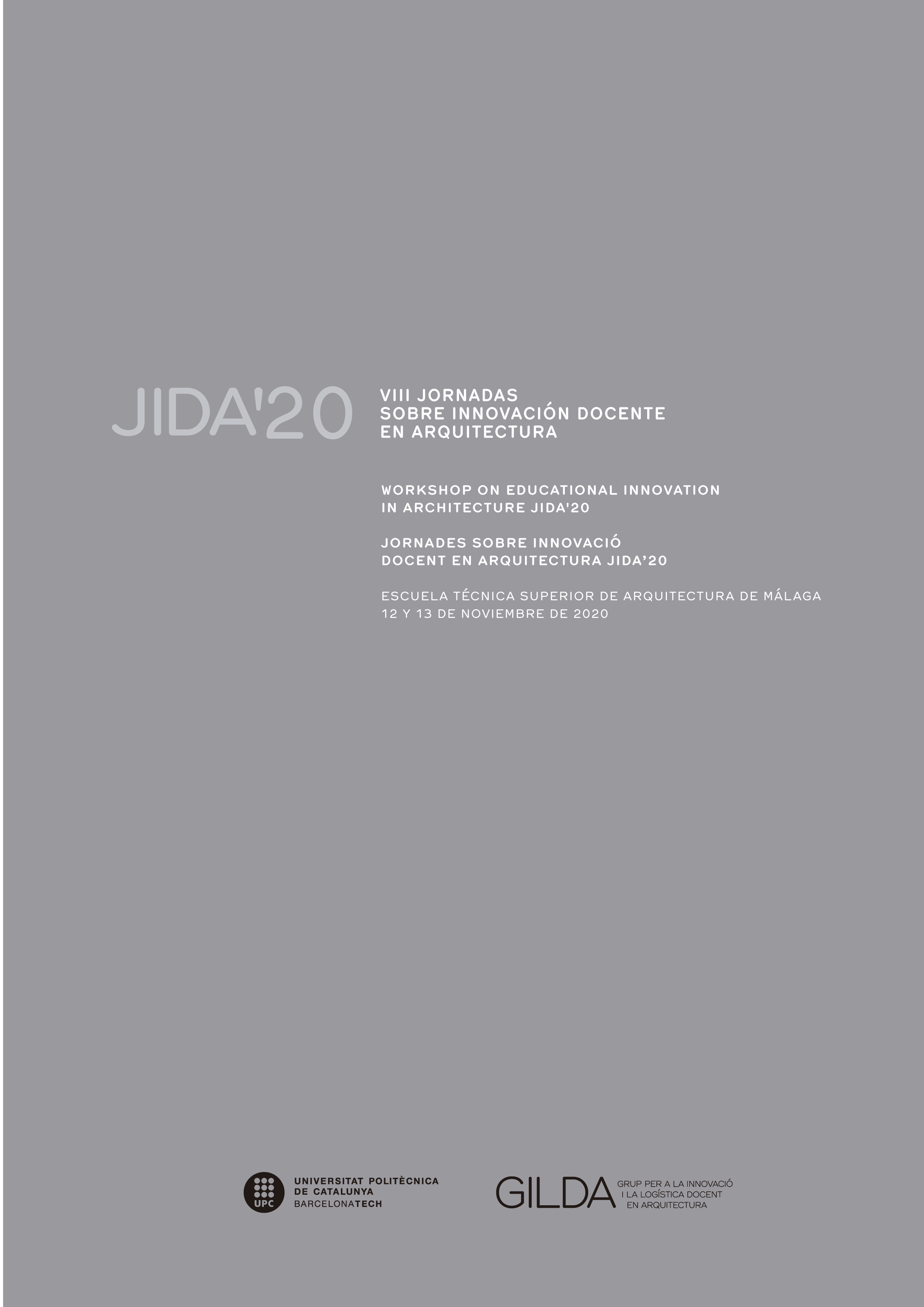Conversational Learning
DOI:
https://doi.org/10.5821/jida.2020.9372Abstract
The concept of conversational teaching arise from David Kolb's aspiration to explore a new approach to teaching and learning based on theory and experimental practice. This article describes the journey from the tacit and intuitive notions of a conversation, elaborates on its mechanisms to apply it as a methodology in learning the architectural project. This method is implemented in the Tuñón unit, in the subject of architectural projects 5-6, third year of the ETSAM-UPM. The methodology is applied in three formats: active conversation, transcribed conversation and global conversation, interpreted as a provisional representation. It is intended to question the effectiveness of the traditional design studio as a discursive learning environment, leading to based on this diversity of conversations, provide the student with tools to be able to visualize and interact with their architectural production in different environments and with different actors.
References
ÃLVAREZ, P. (2014). Ventaja, distancia y envés: Exploraciones editoriales y arquitectura en la era de la hipercomunicación. Blog de la Fundación Arquia, 2014.
ARREDONDO GARRIDO, D. (2015) El editor de revistas de arquitectura en la era de Google en Revista SOBRE Prácticas ArtÃsticas y PolÃticas de la Edición, n. 1.
CABERO, J. y ROMÃN, P.(2006) E-actividades. Sevilla: Eduforma.
COCA, J. de, GARCÃ-ROSALES, G. y MALLO, M. (2017) Interacciones en el aprendizaje de dibujar, analizar e idear. Apuntes hacia una pedagogÃa comunicativa transversal. En: Equipo COCA 17 (ed.). / Congreso Internacional de Comunicación Arquitectónica. Madrid: ETSAM-UPM. 93-104.
CROWTHER, P. (2018) Constructing the Conversational Roles of Studio Design Education Stakeholders in Times of Change.
DEWEY, J. (1978) Democracia y educación. Buenos Aires: Losada.
FALCHIKOV, N. (2001) Learning together: peer tutoring in higher education.
FREIRE, P. (1992) Pedagogy of the Oppressed. New York: Continuum.1992
GARCÃA, I.; GARCÃA-DIEGO. H.; POZO, J. M. (2012) Las revistas de arquitectura (1900-1975): crónicas, manifiestos, propaganda: actas preliminares. Pamplona: Congreso Internacional Historia de la Arquitectura Moderna Española.
GARCÃA DEL REY, A. (2009). Arquitectura reciente: ampliación del campo de batalla. Coloquio Gausa y Tuñón, en Minerva, n. 10. pp. 85-91.
HAGEL, P., & SHAW, R. N. (2006). Students’ perceptions of study modes. Distance Education, 27(3)
JARAUTA MARIÓN, Francisco. (2005) Para una filosofÃa del ensayo. Universidad de Murcia: Servicio de Publicaciones.
KOLB, David A. (2012) Conversational Learning: An Experiential Approach to Knowledge Creation.
LATOUR, Bruno, and GOLDSTEIN, VÃctor. (2012) Nunca fuimos modernos: ensayos de antropologÃa simétrica.
LLEDÓ Ãñigo, Emilio, y FERNANDEZ ALBA, Antonio. (2009)El marco de la belleza y el desierto de la arquitectura. Madrid.
MCCLEAN, David y HOURIGAN, Neasa. (2013) Critical Dialogue in Architecture Studio: Peer Interaction and Feedback, Journal for Education in the Built Environment. https://www.tandfonline.com/doi/pdf/10.11120/jebe.2013.00004
MORENO MANSILLA, Luis Moreno. (2002) Apuntes de viaje al interior del tiempo. Barcelona: Fundación Caja de Arquitectos.
MORENO MANSILLA, L.; ROJO, L.; TUÑÓN, E. Escritos circenses: Mansilla, Rojo, Tuñón. Barcelona: Editorial Gustavo Gili. PEREC, G. Especies de espacios. Barcelona: Editorial Montesinos.
NONAKA, I. (1994) A dynamic theory of organizational knowledge creation. Organizational Science, 5, no. 1:14-37.
TAPIA, Mª N. (2008) Aprendizaje y servicio solidario. Buenos Aires.
TUÑON, Emilio. (2019) Textos CrÃticos. Ediciones asimétricas.






















